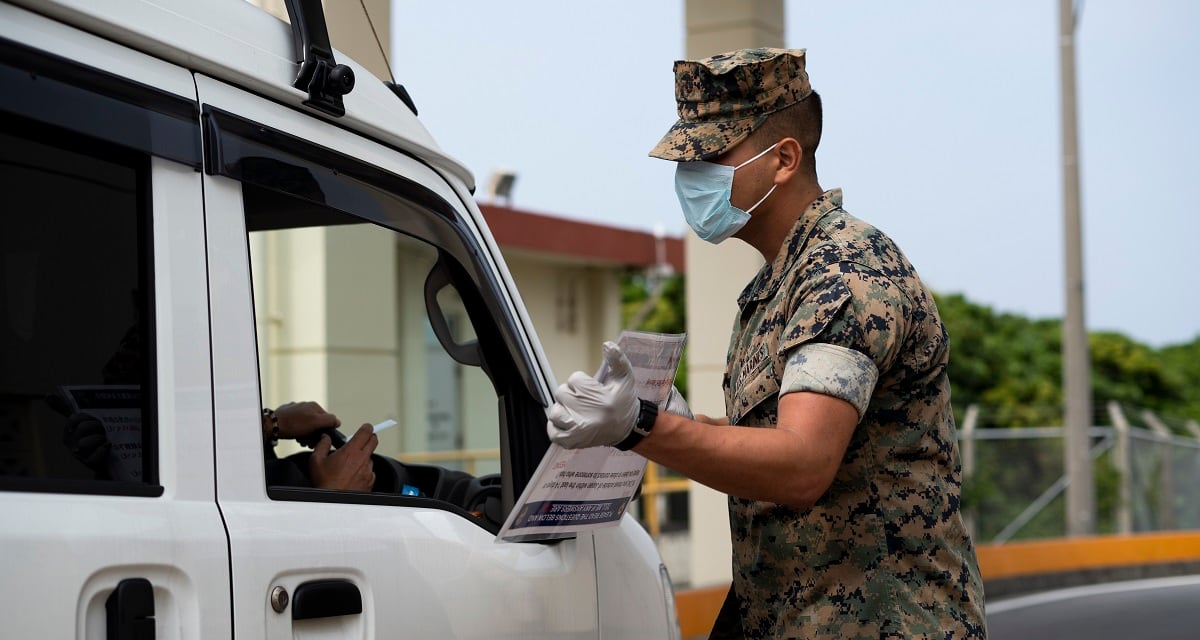Coronavirus cases are up more than 20 percent in service members this week, to 20,212, as the military’s battle against the pandemic continues to mirror the challenges civilian leaders are facing across the country.
Defense officials have pointed to local spikes in states like California, Arizona, Texas, Georgia and Florida, all home to multiple military installations, as a possible reason for the increase. After numbers of new cases stabilized in May, the Defense Department has seen a steady increase going back to June, when “re-opening” plans began to roll out across the U.S.
“While we are seeing some upticks in the same places there are upticks in the civilian sector, again, that is not necessarily overly surprising, in that we have been doing more testing,” assistant defense secretary for health affairs Tom McCaffery told reporters July 2. “And we have been doing testing of those who are asymptomatic.”
California and Florida have remained on the no-go list for non-essential travel, though other states have remained green.
The infection rate in the services has risen to 0.9 percent, more than twice what it was in April, the month that had until now shown the biggest surges. The infection rate among U.S. residents passed 1 percent this week, bringing troops to nearly on par with the general population, where they had been seeing roughly half the general infection rate during the spring.
Of those infected, three have died, 425 have been hospitalized and 8,421 have recovered, leaving 11,791 active cases.
From the first soldier diagnosed in South Korea at the end of February, it took until early June for the military to see 10,000 cases. The next 10,000 cases took six weeks.
The department has so far not been able to provide a breakdown of symptomatic vs. asymptomatic positives. Nor did McCaffery, in his July 2 press conference, respond to the question of why, if the services began their asymptomatic testing program in late April, did numbers stabilize in the following weeks, then begin to dramatically spike come June.
Further, the continuing rise of cases in the face of strict on-base regulations about social distance and face coverings ― as well as local directives about where troops are allowed to go during their free time and whether they must cover their faces while out ― are not getting the virus’ spread under control.
“I fully believe that local commanders are going to make the right decision both for the health and wellness of their active duty, their civilian employees, the families of active duty – and to make sure that they can meet their mission,” McCaffery said July 2.
Across the department, 29,047 affiliated personnel have been diagnosed, which includes dependents, civilians and contractors. That figure rose by 22 percent this week.
This past week did see a drop in the rate of new cases, following a week that saw an increase of roughly 20 percent. The department also reported five new deaths this week ― one dependent, one contractor and three civilians ― for a total of 46 overall.
The Marine Corps saw the biggest spike in terms of rate, with 30 percent, though that was down from a 41-percent increase during the previous period calculated by Military Times. As of Friday, there have been 2,298 Marines diagnosed.
The Air Force also saw a significant rate drop during the period, from 55 percent to 25 percent., with 2,991 airmen diagnosed so far.
The Army continues to have the largest number of cases and the largest number of new cases this week, with 6,599 overall, an increase of 24 percent over last week.
And the Navy, though it had over 40 percent of the military’s cases early on, thanks to outbreaks on two ships, has steadied itself ― a 15-percent increase this week, versus 25 percent the previous reporting period, for 5,280 cases overall.
The National Guard’s rate of increase has stayed in the teens for weeks, with 2,804 cases reported as of Friday.
Meghann Myers is the Pentagon bureau chief at Military Times. She covers operations, policy, personnel, leadership and other issues affecting service members.





